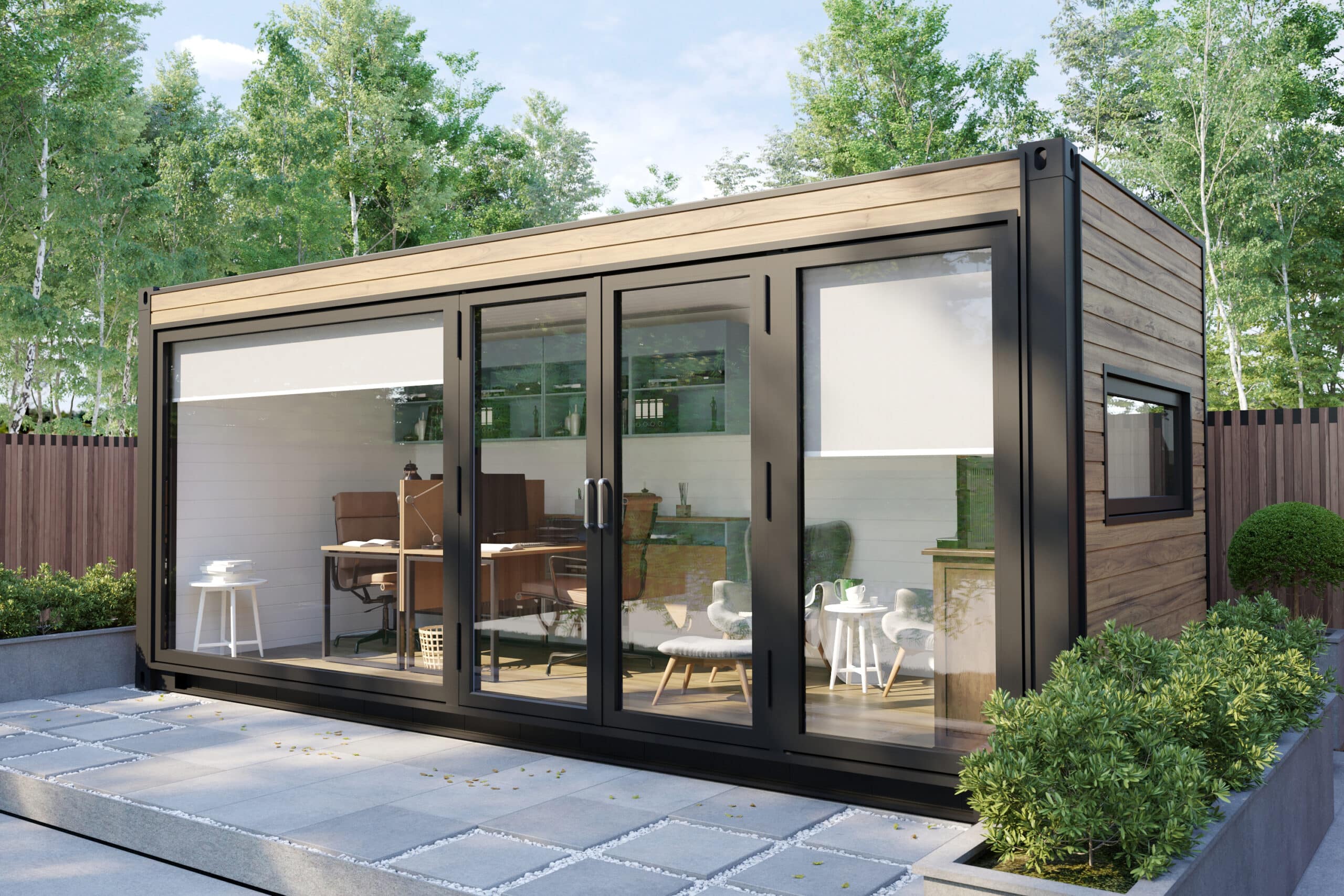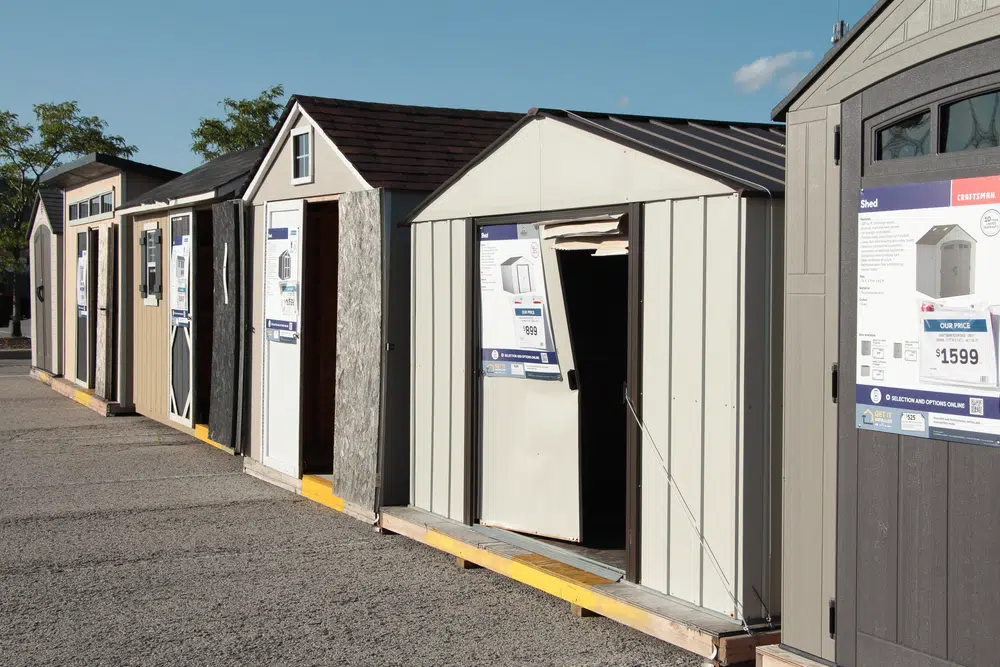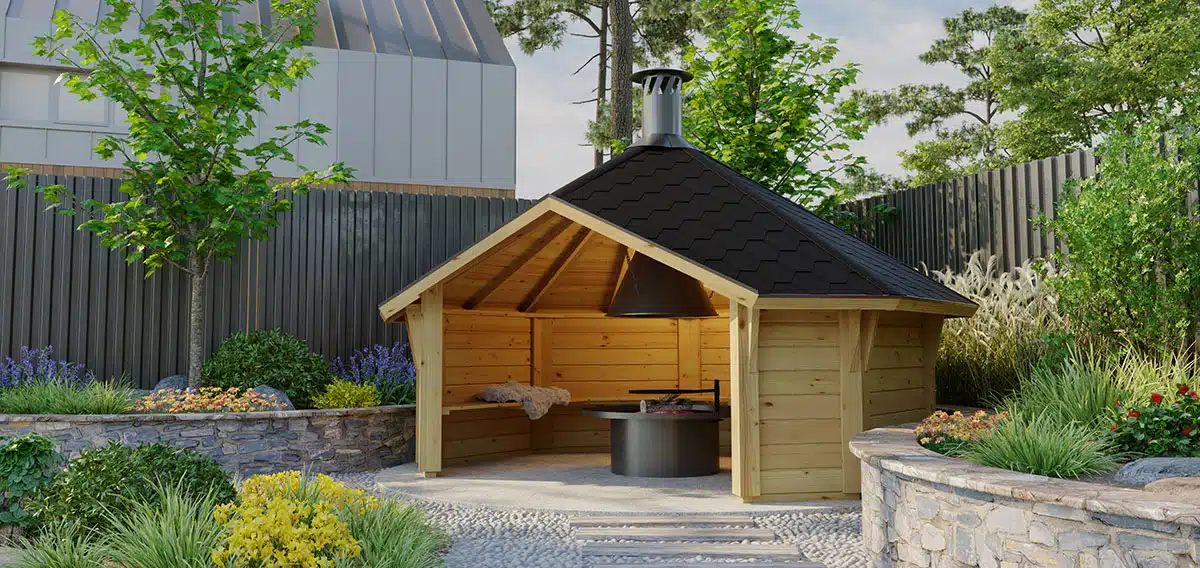What is the ideal temperature for a sauna?
18.03.2024
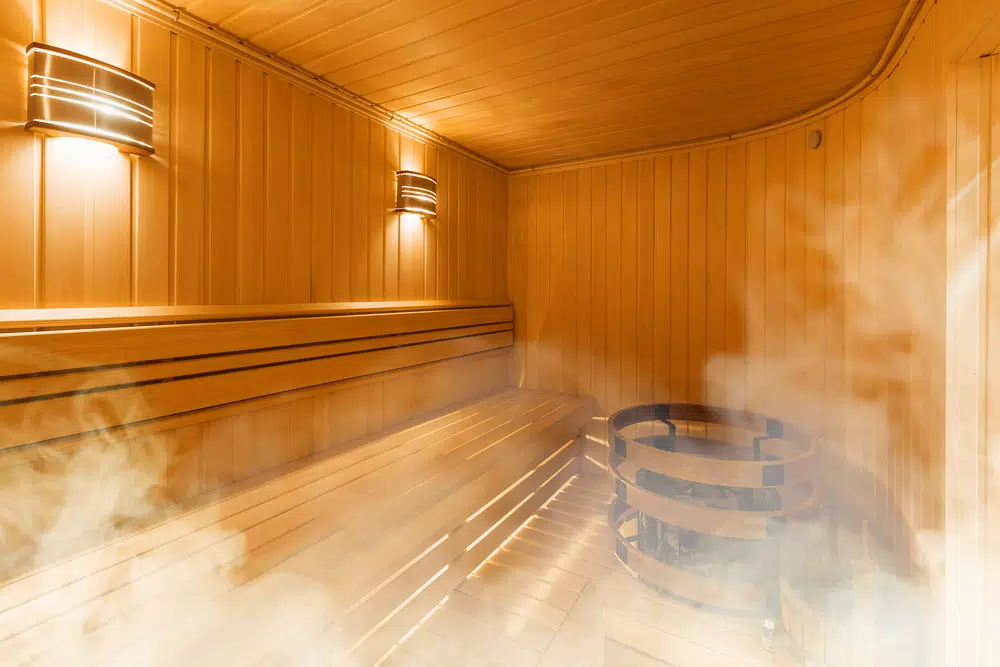
Whether you are new to saunas or an experienced user, you might be curious to learn about the ideal sauna temperatures. When it comes to how hot a sauna should be, the answer is not a very straightforward one because there are several factors involved such as the type of sauna that you are using, your preferences, your experience, and your health.
Throughout this article, we will touch upon some of the most important details about sauna temperatures and we will offer some tips and tricks to help you make the most out of your experience. So let’s dive deeper into this fascinating topic and shed some light on the ideal temperatures for sauna use.
What Is a Garden Sauna?
A garden sauna is an outdoor room, similar to a garden house, designed specifically to be used as a sauna. There are many different types of -saunas available on the market, but regardless of their features, size, and shape, they are all designed as relaxation spaces where you can enjoy dry or wet heat therapy.
Outdoor saunas work in a similar way to indoor saunas, but there are a few major differences in terms of structure. Both indoor and outdoor saunas use a heat source, water, and sauna stones to create steam. Dry heat saunas that use light to create heat are more frequently indoor saunas, but you might also find this type of sauna as an outdoor building.
Garden saunas are usually made of high-quality materials that can withstand the effects of weather and temperature changes that are typical in outdoor settings. Outdoor saunas can be box-shaped, cube-shaped or barrel-shaped and each shape comes in a variety of sizes.
Different Types of Saunas
Before discussing the right temperature for your sauna, it is important to mention that several types of saunas work differently in terms of heat and temperature. The most important feature of a sauna, be it an indoor or an outdoor one, is, of course, its heating mechanism. Some experts would argue that infrared saunas and steam rooms are not saunas in the true sense of the word.
Traditional saunas are heated with stones that are placed on top of a stove and that heat the air inside the sauna room. The stove can be electric, gas, or wood-burning. Let’s take a closer look at each type of sauna based on the heating mechanism:
Traditional Saunas
Gas Heater Sauna
This type of sauna is heated with stoves that work on natural gas or liquid propane. Gas heater saunas generally take between 30 to 60 minutes to reach the right temperature and they are among the most popular choices as they are quite energy-efficient and cost-effective. For large and frequently used saunas, gas heaters are the best option and you will often find this type of sauna in spas and gyms. If you plan to use your garden sauna often or if you wish to invest in a large sauna room, it is highly recommended to consider a gas heater.
Electric Heater Saunas
Saunas that are heated with electricity are quite convenient as well and have plenty of advantages. They are great options for people who want to make utilising the sauna as simple as possible as electric heater saunas can be turned on and off with the flick of a switch. Electric heater saunas also have a very fast heat-up time and can easily be programmed to turn on at designated times. An electric heater sauna typically takes between 20 to 45 minutes to reach the ideal temperature and you can control and regulate the temperature by using a thermostat. You can control the thermostat from your smart device and program it to reach the perfect temperature right as you get home from work. The only downside with electric heaters is that they may cost you more in the long run than gas heaters.
Wood-burning Heater Sauna
Wood-burning heater saunas are the most traditional and authentic type of saunas and they can provide a very cosy environment. If you are looking for a rustic, traditional experience and don’t mind putting in some extra work, a wood-fueled heater sauna is a great option. This type of sauna is also best for remote locations where electricity and gas are not available. A wood-burning sauna will heat in 30 to 60 minutes, but the temperature can be a bit more difficult to control with this type of heating mechanism.
Infrared saunas
Infrared saunas are not considered traditional saunas but are quite popular as well. They are gaining more and more popularity as they come with plenty of benefits. As mentioned above, infrared saunas are typically built indoors, but outdoor infrared saunas are also available on the market so they deserve a spot in our article.
Unlike a traditional one, infrared saunas do not heat the space, but instead, your body gets heated through infrared waves. An infrared sauna is ready to use in approximately 10 to 20 minutes. A major advantage of infrared saunas is represented by how easily you can control and change the temperature.
Steam Saunas
The steam sauna is another interesting type of sauna that operates in a different way from traditional or infrared saunas. The steam sauna gets heated through a steam generator that boils water and releases steam. Humidity levels in this type of sauna can reach 100% due to the constant steam release, but the temperatures are lower than in traditional saunas, making this type of sauna more relaxing for people who are sensitive to high temperatures.
A typical session in a steam sauna can be a bit longer than one in a traditional sauna due to the lower temperatures, but it is important to listen to your body and be careful not to overdo it and to build a tolerance gradually.
What is the ideal temperature for saunas?
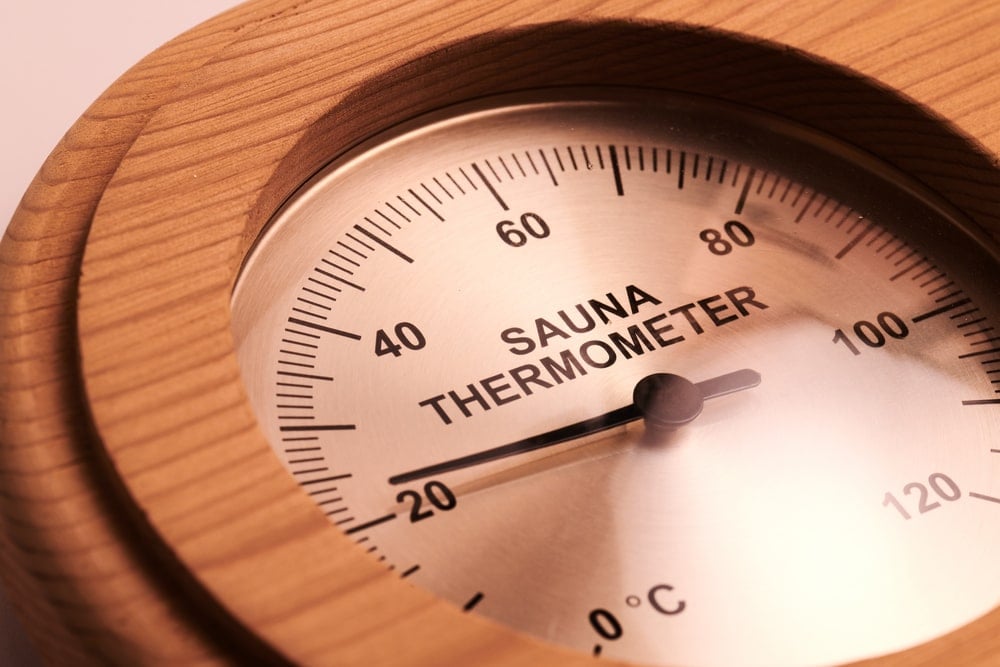
The ideal temperature for enjoying a traditional sauna experience is not a fixed number but falls within a certain range. The Finnish Sauna Society suggests that for conventional saunas heated by wood, gas, or electricity, a comfortable temperature range is between 70 and 90 degrees Celsius (158 to 194 degrees Fahrenheit). Meanwhile, the American College of Sports Medicine puts forward a slightly narrower range, recommending temperatures between 71 and 77 degrees Celsius (159 to 170 degrees Fahrenheit).
It’s important to note that sauna temperatures exceeding 80 degrees Celsius may feel quite intense, especially for those new to the experience. On average, sauna-goers can manage a session lasting 10 to 20 minutes at temperatures ranging from 70 to 90 degrees Celsius (158 to 194 degrees Fahrenheit). In contrast, steam saunas operate at lower temperatures, between 32 and 49 degrees Celsius (90 to 120 degrees Fahrenheit), but the higher humidity levels make the environment feel much warmer.
For those interested in infrared saunas, the ideal temperature settings are significantly lower, ranging from 38 to 65 degrees Celsius (100 to 150 degrees Fahrenheit). This difference is due to the unique way in which infrared saunas heat the body.
Health experts caution against spending more than 20 minutes in a sauna during any single session. Prolonged exposure to high heat can lead to dehydration and other health issues. Specifically, the American College of Sports Medicine advises against exceeding 10 minutes in a sauna. However, it’s not uncommon for seasoned sauna enthusiasts to enjoy longer sessions or prefer higher temperatures. For newcomers to the sauna world, it’s wise to start with lower temperatures and shorter durations, gradually building up your tolerance over time.
Humidity is another important aspect when it comes to saunas, and in a traditional sauna, the humidity should be between 5 and 10% and slightly higher when water is poured over the hot stones.
Listen to your body
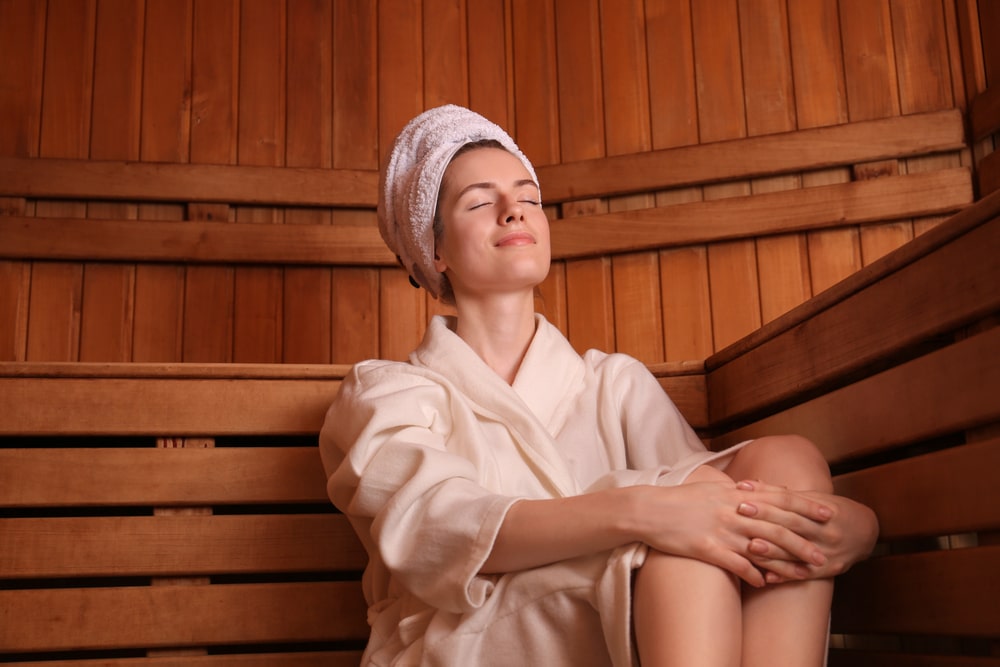
When it comes to being exposed to high temperatures, each person can have a different threshold that depends on several factors including personal preferences, experience, and health. The best indicator for the ideal sauna temperature is none other than your own body, so it is essential to listen to your body when you spend time in a sauna. Take some time to analyze how you feel in the sauna and remember that it is supposed to be a relaxing and enjoyable experience. If you feel too hot or too cold, do not force your body too much and adjust the temperature if possible. How your body reacts to temperature can be affected by factors such as outdoor temperatures, diet, physical shape, health, etc. Some people require lower temperatures than others and children, for example, shouldn’t be exposed to extreme temperatures.
Another important thing to remember is that the temperatures in a sauna vary depending on height. Hot air floats upwards, so it is normally hotter on the upper benches. If you find it too hot on the upper bench, try sitting on a lower bench first, before leaving the sauna or before adjusting the temperature. If you feel too hot on the lower bench, step outside the sauna or lower the temperature. The same applies if you sit on the lower bench and feel like you would like to sit at a higher temperature.
If you are in a sauna with several people who feel more comfortable with the high temperature than you, that is probably because they have more experience. People who use the sauna more frequently start to build a tolerance for the conditions inside the sauna. You can build a tolerance gradually, by starting from a lower temperature and increasing the temperature over time as you start to feel more comfortable.
6 Things to Consider, When in Sauna!
Using a sauna can have lots of health benefits as long as you remember these safety tips:
- Don’t spend too much time in the sauna – It is important to keep your sauna sessions short and to build up tolerance over time. Start with 10-minute sessions and gradually increase them, but do not exceed 20 minutes.
- Listen to your body – Spending time in a sauna should be a pleasant and relaxing activity. If you feel uncomfortable physically, nauseous, dizzy, or simply too hot, it is best to leave the sauna.
- Hydration is key – If you plan on spending time in a sauna, make sure you hydrate beforehand. It is recommended to drink plenty of water before you enter the sauna and after each session. Drinking mineral water is recommended as it will replace the electrolytes that you lose through sweating.
- Dress appropriately – Most people wear little clothing inside saunas, and if you have a sauna in your garden, you won’t need to worry much about what you are going to wear. As a general idea, you should wear loose-fitted clothes, a towel, or a swimsuit. It is recommended to remove metal jewelry before entering the sauna as metal can heat up and cause burning and skin irritation.Also, pay attention to the material of your clothes, and avoid wearing fabrics that may harm your skin when exposed to extreme heat.
- Bring someone with you – Using the buddy system is a great way to avoid some of the problems that can occur in a sauna such as slipping, fainting, falling asleep, etc. By bringing a family member or a friend, you get to socialise with someone and spend some quality time together while also ensuring that you are safe.
- Rest after each sauna session – After each sauna session, it is recommended to lie down or sit for a minimum of 10 minutes, and then you can take a cool shower to regulate your body temperature.
In Conclusion
The ideal sauna temperature depends on many different factors such as heating type and personal preference. If you are not an experienced sauna enthusiast, it is highly recommended to start at a lower temperature and do shorter sessions. As your body adjusts to the sauna conditions, you can slowly increase the temperature and the time spent inside the sauna. Whether you opt for a traditional sauna, an infrared sauna, or a steam sauna, over time, you will surely feel the health benefits associated with this relaxation and wellness activity.
Sauna Related FAQ’S-
- Is it OK to do sauna every day?
Yes, it’s generally safe to use a sauna every day if you are healthy and hydrated properly before and after. However, it’s important to listen to your body and not overdo it. - How long should I sit in a sauna?
Sauna beginners should start with 5-10 minutes per session. With experience, you may extend up to 15-20 minutes, but avoid exceeding 20 minutes in one session to prevent dehydration and overheating. - What temp should a sauna be in Celsius?
The ideal temperature range for a traditional sauna is between 70 and 90 degrees Celsius (158 to 194 degrees Fahrenheit). - Should I drink water in a sauna?
Yes, it’s crucial to stay hydrated during and before a sauna. Drinking water after your session is also important to replenish fluids lost through sweating. - Does sauna heat damage hair?
Yes, Frequent exposure to high heat can dry out your hair. It’s advisable to protect your hair by wearing a towel or sauna hat to minimize heat damage. - What not to do after a sauna?
Avoid jumping into cold water immediately after a sauna session if you have heart issues or are unaccustomed. Also, avoid drinking alcohol or eating large meals immediately afterwards. - What is best to do after a sauna?
Rest for at least 10 minutes, drink water or a hydrating drink to replenish fluids, and take a cool shower to help your body temperature return to normal. - What are the rules for saunas?
The basic rules include: hydrate well, sit on a towel, avoid wearing jewellery, limit session time, and shower before entering for hygiene. - What is the rule of 200 in a sauna?
The rule of 200 is a guideline suggesting the sum of the sauna’s temperature in Celsius and the duration of the sauna session in minutes should not exceed 200. For example, a temperature of 80°C for a 20-minute session equals 100, which is within the safe range.
This guide provides a general guideline for safe and enjoyable sauna use, tailored to those new to the experience as well as regular users. Always remember individual tolerance varies, and it’s essential to consult a healthcare professional if you have health concerns.
Thinking of setting up a sauna cabin in your garden in the comfort of your home? Explore our stylish range of outdoor saunas or consult with our team of experts at 02038070369 to choose the best.
Categories:
GuidesWant to discuss over phone. Let us call back to you
If you need any additional info regarding any product, please fill in the below form and we will get back to you, usually the same or next working day.
Have any questions regarding some product?
If you need any additional info regarding any product, please send us your questions.
